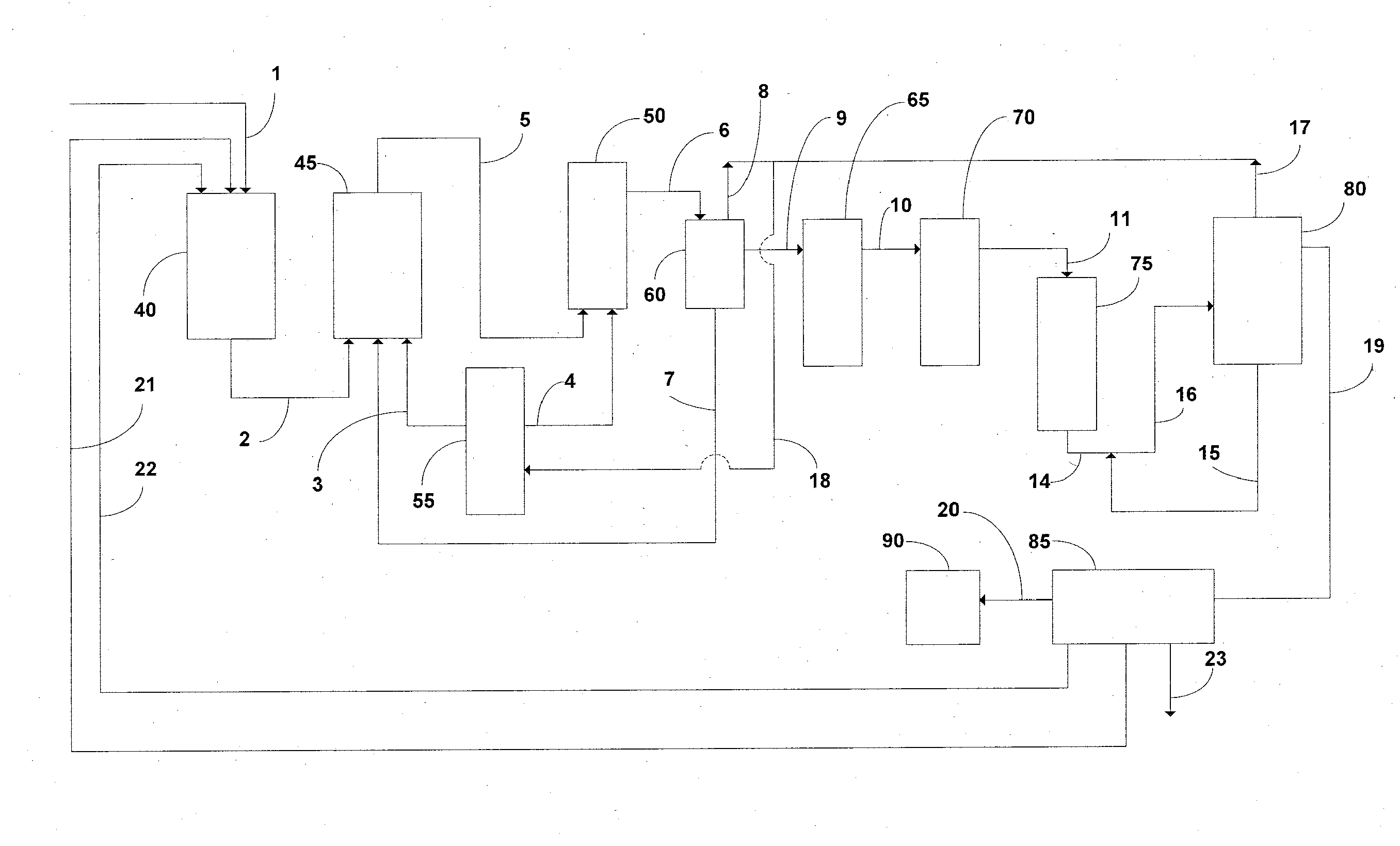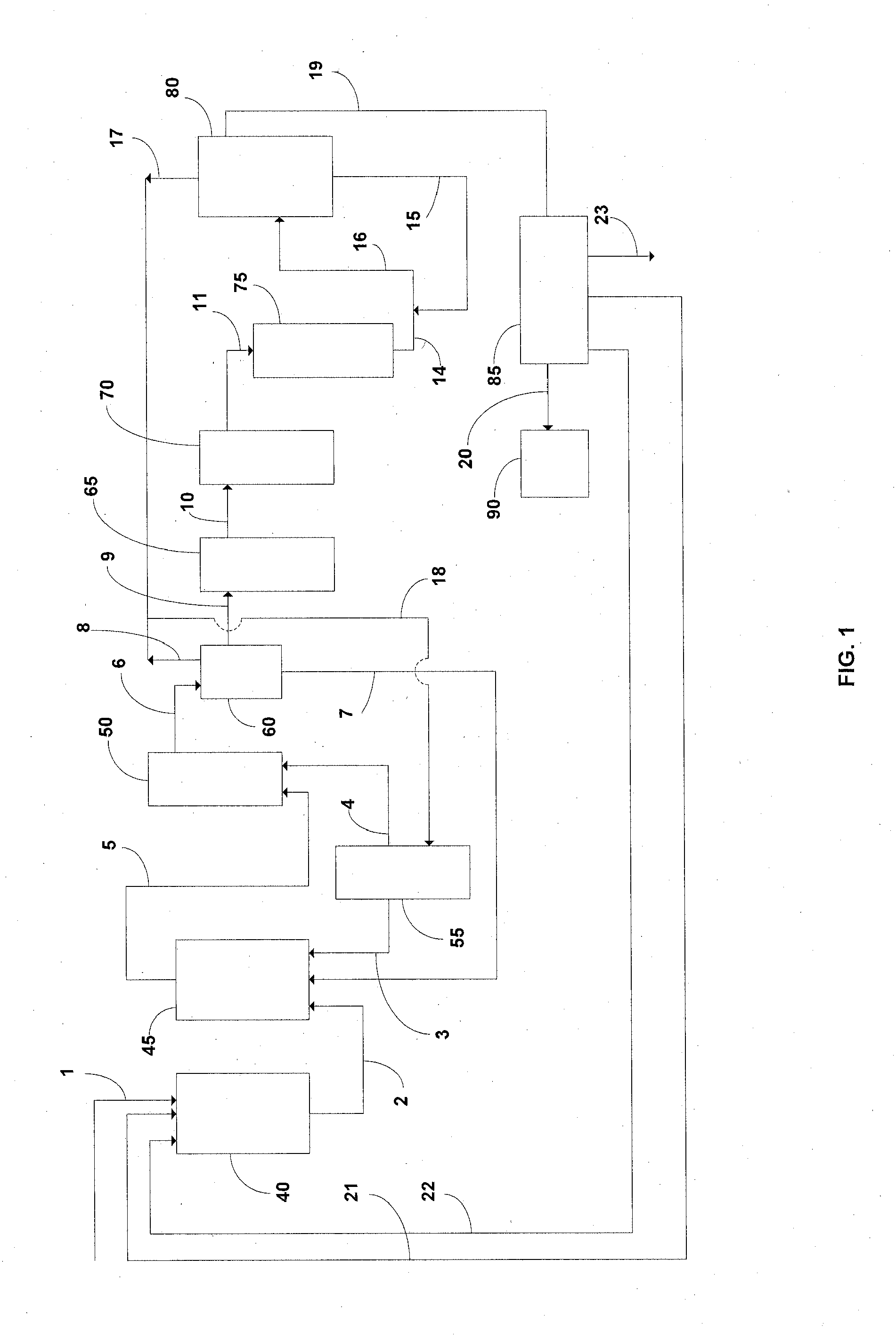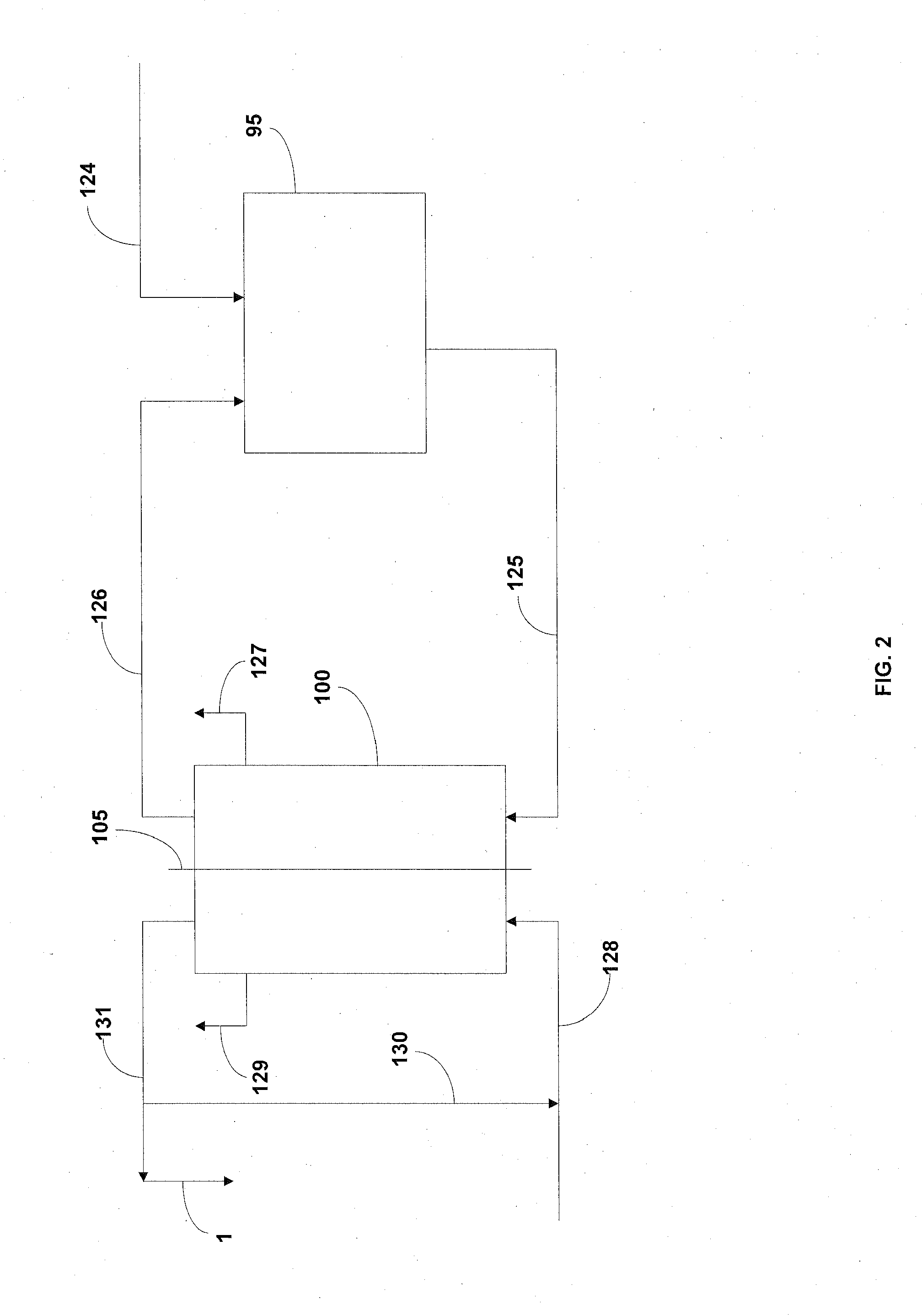Processes for preparing highly pure lithium carbonate and other highly pure lithium containing compounds
a lithium carbonate and high-purity technology, applied in the field of selective preparation of high-purity lithium carbonate and various other high-purity lithium containing compounds, can solve the problems of not previously being commercially exploited, limiting the ability of lithium carbonate to be used as a battery grade lithium product without first undergoing further purification, and none of the currently employed methods
- Summary
- Abstract
- Description
- Claims
- Application Information
AI Technical Summary
Benefits of technology
Problems solved by technology
Method used
Image
Examples
example no.1
Example No. 1
Production of Lithium Carbonate
[0110]Referring now to FIG. 1 and FIG. 2, 40 is the dispersion; 45 is the first reactor, 50 is the second reactor, 55 is the CO2 tank, 60 is the gas / solid / liquid separation tank(degasser), 65 is the filter bags, 70 is the filter cartridges, 75 is the resin columns, 80 is the precipitator, 85 is the felt filter, 90 is the dryer, 1 is the impure carbonate stream, 2 is the first reactor feed stream, 3 is the first carbonation reactor, 4 is the second carbonation reactor, 5 is the second reactor feed stream, 6 is the transfer stream to decanter, 7 is the carbonate return stream to first reactor, 8 is the first carbon dioxide recycle, 9 is the bicarbonate stream which is supplied to coarse filtration filter bags (such as the liquid filtration bags provided by Eaton-GAF), 10 is the bicarbonate stream which is supplied to fine filtration cartridge filters (such as the sterilizing-grade Aervent cartridge filters available from Millipore), 11 is th...
example no.2
Example No. 2
Loading the Resin to the Column
[0117]Resin is loaded into the column, as follows. First, in a 208 L barrel, Purolite® S 940 resin is mixed with deionized water. To a column having a volume of about 1,060 L was added about a ½ volume of deionized water. Using a funnel, the resin and deionized water are manually added to the column. As needed, the valve at the bottom of the column is opened to empty a little water. The steps are repeated until approximately 440 L of resin has been introduced to the column.
example no.3
Example No. 3
Resin Regeneration
[0118]In one embodiment of the present invention, a method for the regeneration of the ion exchange resin is provided, as follows:[0119](1) strong liquor is removed from the displacement solution and placed in a holding tank; the strong liquor is replaced with about 1 bed volume of deionized water that is pumped into the top of the column at a rate of about 2 to 4 bed-volumes / hour;[0120](2) the resin is unpacked with deionized water and the column is filled from the bottom of the column with about 1.5 bed volumes of water at a rate 1.2 bed-volumes / hour;[0121](3) the pH of the solution in the column is lowered to force resin balls to release retained metal elements and the column filled with 2 bed volumes of an HCl solution having a concentration of between about 1-8%, preferably 4%, at a rate of about 2.4 bed-volumes / hour[0122](4) the acid it is left in place for about 30 minutes;[0123](5) steps (3) and (4) are repeated;[0124](6) the column is rinsed w...
PUM
| Property | Measurement | Unit |
|---|---|---|
| temperature | aaaaa | aaaaa |
| temperature | aaaaa | aaaaa |
| temperature | aaaaa | aaaaa |
Abstract
Description
Claims
Application Information
 Login to View More
Login to View More - R&D
- Intellectual Property
- Life Sciences
- Materials
- Tech Scout
- Unparalleled Data Quality
- Higher Quality Content
- 60% Fewer Hallucinations
Browse by: Latest US Patents, China's latest patents, Technical Efficacy Thesaurus, Application Domain, Technology Topic, Popular Technical Reports.
© 2025 PatSnap. All rights reserved.Legal|Privacy policy|Modern Slavery Act Transparency Statement|Sitemap|About US| Contact US: help@patsnap.com



